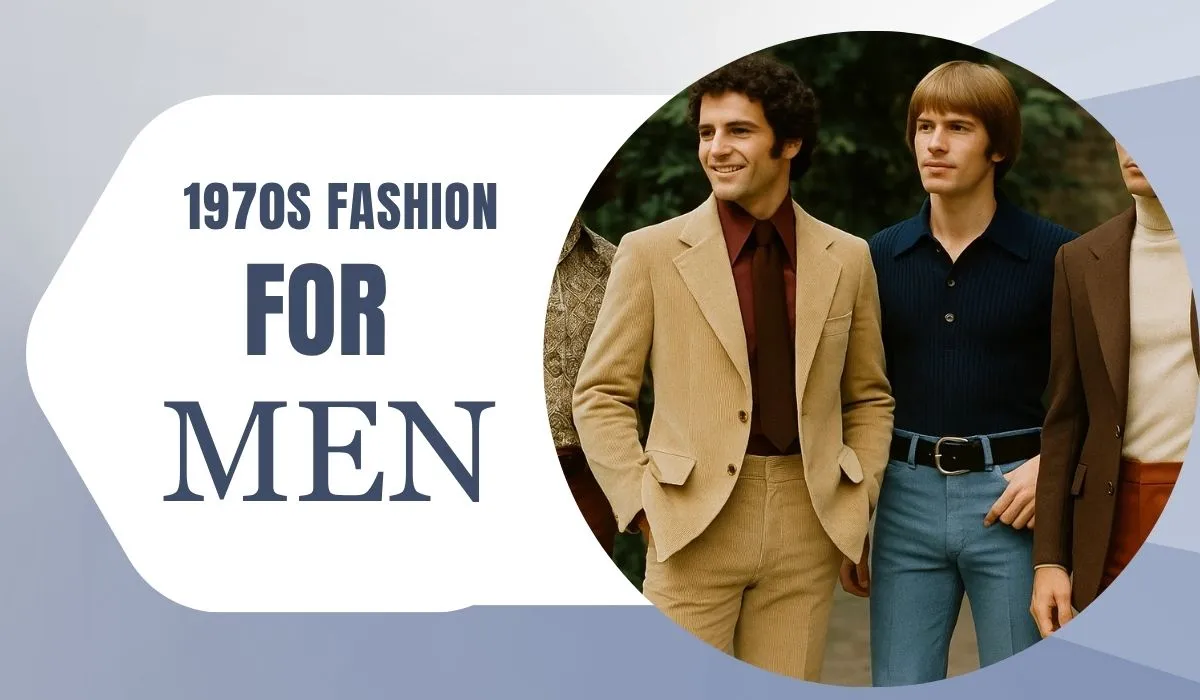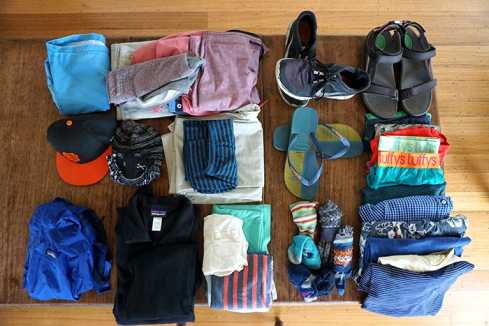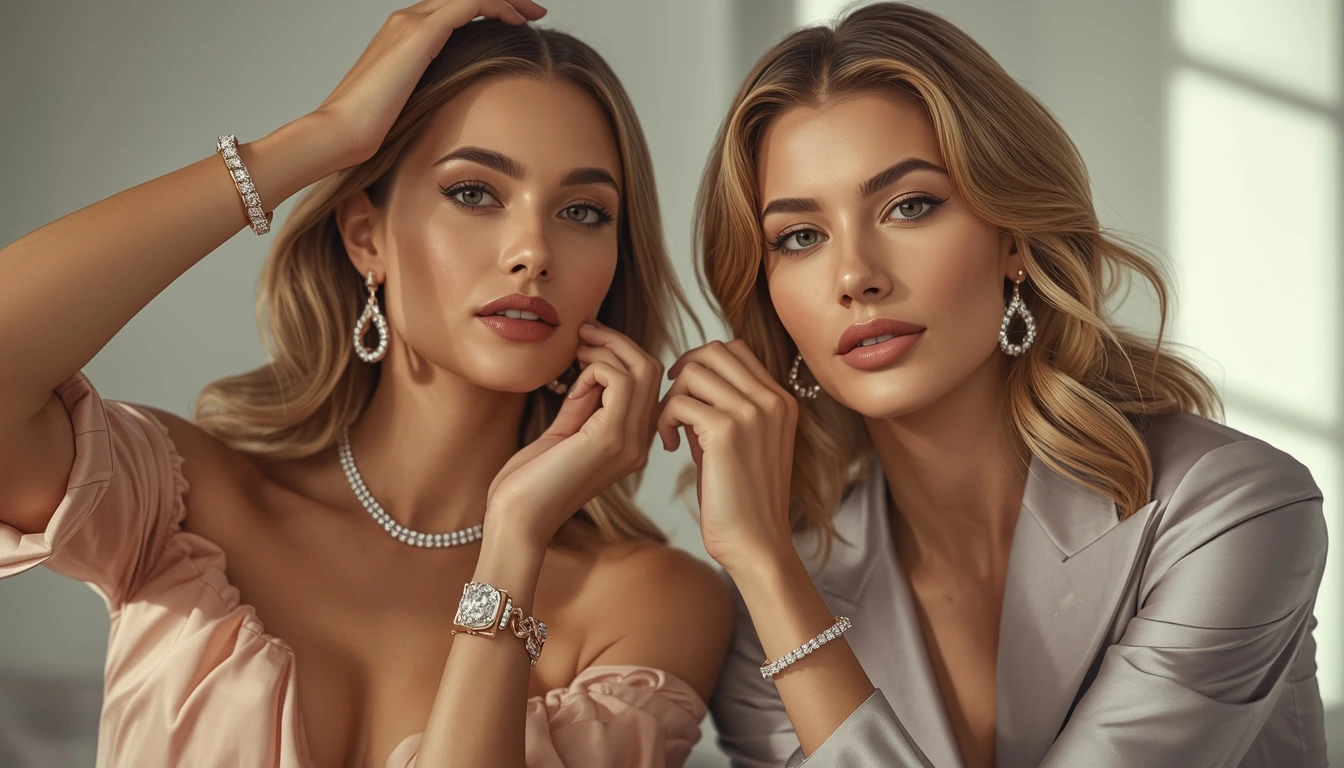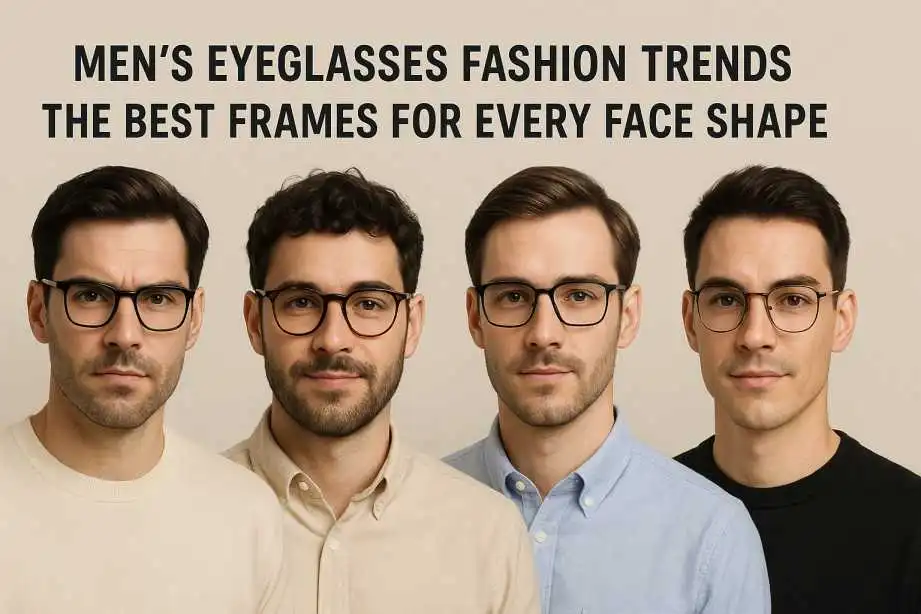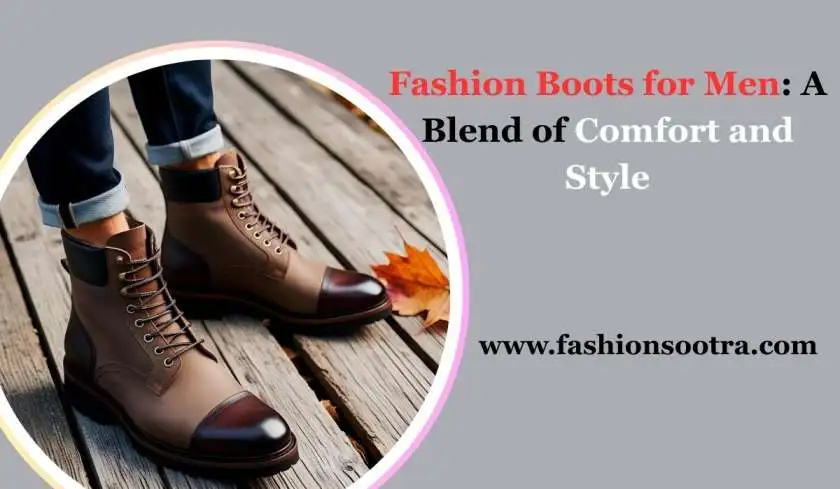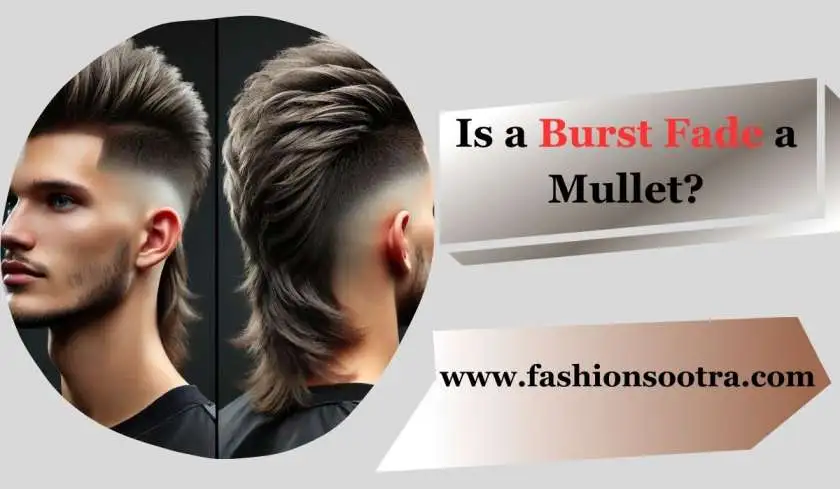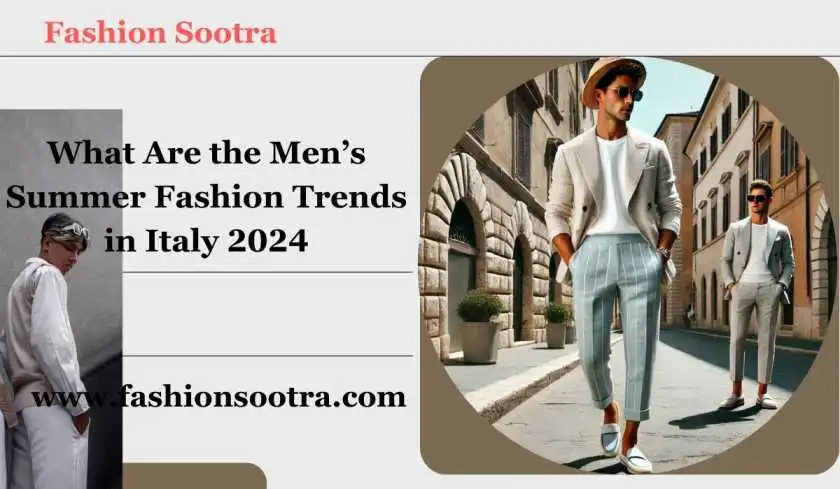Men's fashion in the 1970s featured bold styles. Flared pants and bell-bottoms were everywhere. Wide-collared shirts added flair, too. Polyester leisure suits became a popular choice. Casualwear featured denim, T-shirts, and sweaters.
In contrast, formalwear showcased colorful suits with textures. Ruffled shirts and platform shoes became popular, too. Punk, glam rock, and disco subcultures shaped the unique styles of the era. They influenced how people expressed themselves through fashion.
Right now, we're seeing a return of the 70s fashion for Men. But at that point, what is 1970s fashion for Men in the 21st Century? It's not about returning to the 70s. Or, it is about amalgamating the ancient with the unused. Let's take a closer look at why the 1970s fashion for men came back.
What Is the 1970s Fashion for Men?
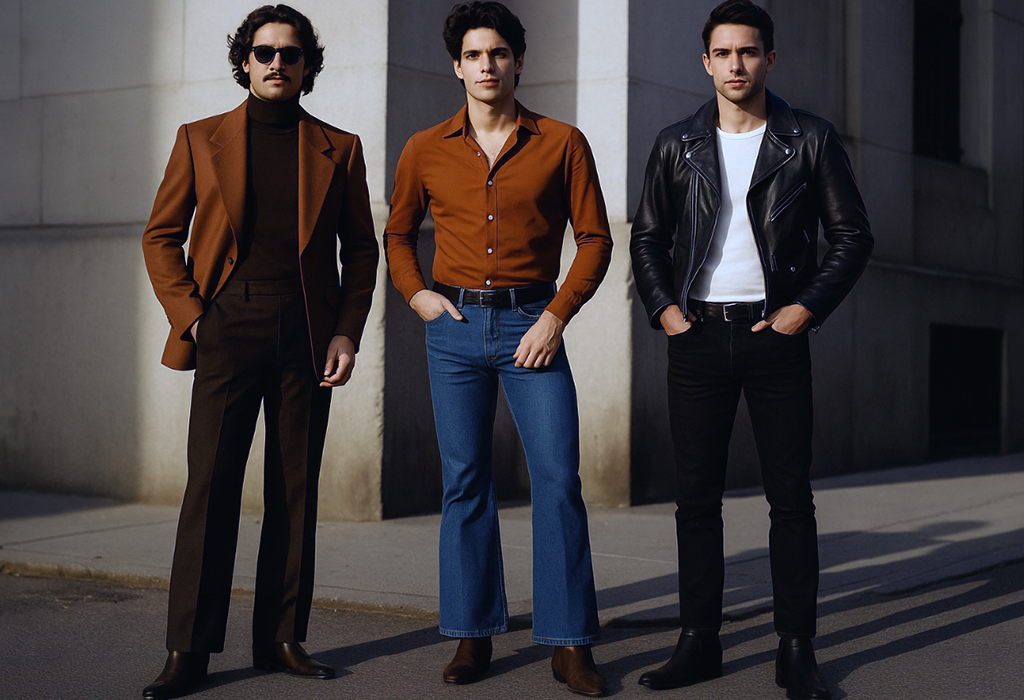
The 1970s became known for bold fashion. Icons like Freddie Mercury inspired self-expression. The late 1960s fashion had a strong soul. The decade embraced lively experimentation. Men’s mold explored a new area, embracing bold shapes that broke from tradition.
70s Fashion for Men
Tailoring stood front and center in 1970s menswear, giving rise to particular outlines over coats, pants, and shirts. Originators and style-minded men alike floated toward strong lines and sensational extents, pointing for a see that adjusted energy with certainty. Key 70s men’s outfits included chime bottoms, silk shirts, velvet pants, and double-breasted coats, as often as possible wrapped up with strong prints and striking colors.
Read Also: Italian Fashion in the 1920s: A Century of Elegance
Accessories made a difference characterize 70s mold for men, from chunky stage shoes and brightly colored scarves to articulation fedoras. Numerous grasped facial hair and long sideburns, including another layer of show to the era’s striking style.
For those interested in 70s outfits for men or pointing to channel the era’s signature state of mind, there are incalculable ways to bring this famous decade into a advanced closet and stand out with confidence.
Fashion Colors
So, what colors were prevalent amid the 1970s? Whereas the decade was known for its dynamic and now and then wild color choices, it’s imperative to note that there was a particular color palette.
Shades of brown, beige, dark, white, and dim were well known choices. Impartial colors were broadly utilized in male clothing, with textures such as corduroy, knitwear, and silk shirts, whereas colorful pieces, particularly plaid prints, were moreover popular.
Men’s Wide Lapels Were En Vogue
There is no superior way to characterize the 1970s than with wide lapels in menswear—a characterizing drift of that decade. Whether you were donning a coat, three-piece suit, or tuxedo coat, the seventies were all almost wide lapels.
While these pieces of clothing may appear odd by today’s benchmarks, it’s vital to keep in mind that menswear, at the time, centered on strong, offbeat choices.
The Chic Turtleneck or Roll Necks
In the 1970s fashion for Men, nothing talked advancement louder than a turtleneck. Turtleneck sweaters were a go-to choice amid this time. They given warmth and elegance.
Whether donning a classic dark turtleneck or something more colorful like ruddy or greenish blue, a turtleneck is a surefire way to pay a gesture to the seventies and see sharp. After all, men unquestionably shaken their turtleneck outfits with everything from pants to slacks.
Vintage Disco Moment
From the enthusiastic move floors to the stylish bars, folks grasped disco mold intensely. The disco stylish is best known for its tight fits in shinning colors, strong prints, sequins, and shimmers, contributing to a solid sense of individual style.
You Must Also Like: Kentucky Derby Outfits for Men: A Comprehensive Guide
Popular 70s disco dress included polyester chime bottoms vests and sleek shirts with larger than usual collars and sleeves, frequently combined with bordered adornments.
A normal men’s disco furnish highlighted expansive glasses calfskin belts fedoras or boaters, and observe dandies, all celebrating the era’s garish, statement-driven spirit. Real 70s disco outfits routinely joined stage shoes, the extreme staple for men pointing to command consideration on the move floor.
Men’s Corduroy Craze
Corduroy was a mold staple in the fashion for men in the 1970s. Its delicate, rich feel made it well known for formal wear and casual styles.
Corduroy pants, in specific, were a go-to thing, regularly matched with coats and vests made from the same texture in different colors and patterns. Popular corduroy tones included gritty tones like brown, green, blue, and dark, making the texture flexible in 70s wardrobes.
The Extravagance of a Silk Shirt
Silk shirts positioned tall among 70s fashion patterns, turning heads with their luster and wrap. The decade saw men donning button-downs and open-collar styles alike, making silk shirts a favorite for both formal occasions and evenings out. Matched with everything from pants to pants, silk shirts brought clean to any outfit.
Denim in the 70s
Casual 70s men’s fashion found its voice in denim, a texture that signaled a break from the anticipated. Denim coats, frequently wrapped up with patches or weaving, and bell-bottom pants got to be staples for shake stars, activists, and anybody enthusiastic to challenge tradition. Together, these pieces gave men’s 70s mold a unmistakable silhouette.
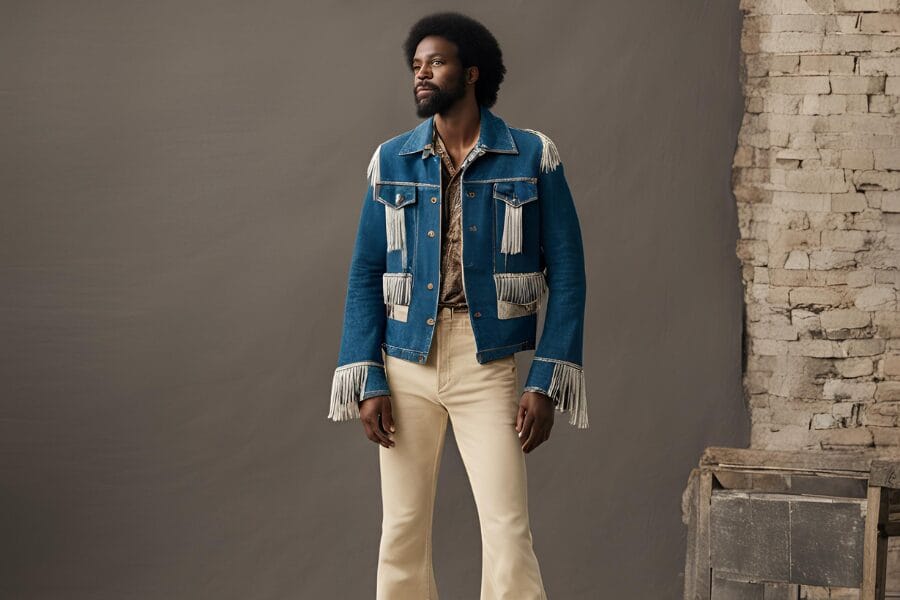
Musicians like Jimi Hendrix and Jim Morrison cemented denim as a foundation of 70s fashion, matching coats with silk scarves or dynamic shirts. Bell-bottom pants appeared up with stage shoes or free tunics, capturing the decade’s taste for strong proportions.
The Hipster Look
Hippie mold surged in the fashion for men in the 1970s, channeling a carefree, anti-establishment soul through loose-fitting shirts, bell-bottom pants, signature long hair, and facial hair. Hipster shoes, from well-worn shoes to slippers, completed the look.
Rooted in counterculture developments, this stylish moved absent from customary standards, favoring unstructured clothing and common materials that celebrated flexibility and self-expression.
Hippie outfits regularly highlighted gritty tones, dynamic tie-dye prints, and botanical fashions, with extras like stage shoes, headbands, and beaded adornments including to the varied blend. This hipster fashion reflected a more profound association to nature and non-conformity, cementing its put in 70s fashion history.
Patterned Knitwear for Each Occasion
70s fashions played a featuring part in men’s knitwear, from strong stripes and argyle to geometric prints and florals. Sew pieces in fleece or cotton conveyed both consolation and identity, giving men incalculable ways to exhibit distinction through their sweaters and vests.
Seventies Men’s Suits
What man’s closet would be total without a suit? The man’s suit was a 70s staple and highlighted eminent upgrades from the past decade. The 70s suit coat was regularly somewhat shorter than normal, whereas the midriff included more characterized forming to donate a smooth outline. Men wore suits with dress shirts, ties, and other embellishments for an ultra-dapper look.
Muscle Culture
The 1970s saw the expansion of subcultures, incompletely due to the rise of muscle culture. Too known as “the muscle cult,” this slant was established on physical wellness, weight training, and solid advancement. This development proceeds to impact current patterns from an tasteful perspective.
Men in this subculture endeavored to develop solid and conditioned physiques, by and large through weightlifting or working out. This act reflected masculinity, quality, and power.
To parade the natural products of their labor, men regularly wore tight t-shirts; this drift proceeded into the disco time when exhibiting chiseled bodies by moving with firmly fitted clothing got to be popular.
The Touch of Velvet
Velvet was the exemplification of menswear, and for a great reason. Its delicate touch and wealthy, finished see made it so alluring. Whether it was a velvet coat, pants, or shirt, these pieces were beyond any doubt to turn heads with their sensational surface and wealthy color.
Deep purple, regal blue, emerald green, and burgundy were well known colors for velvet sports coats. Velvet is still a prevalent texture nowadays, so see for this extravagant fabric the following time you’re shopping for a modern outfit.
Glam Shake Fashion Clothes
The 1970s was a time of strong choices, and men were no exemption. Amid this period, the glam shake tasteful developed as a well known drift among men who grasped their inward shake stars with tight-fitting dress in dynamic colors.
Glam rockers wore form-fitting pieces such as calfskin pants, metallic jumpsuits, and sequined shirts outlined to appear off their body shape whereas making a articulation. Embellishments like chunky stage shoes and long scarves completed the see for numerous impressive honorable men of the 70s.
Wide-leg Trousers
Wide-leg pants were a staple of the scene, regularly recalled with affection and adoration. These clothes are famous for both formal and casual wear. They offer a comfy fit and still look great today, especially in 70s style.
Men wore their favorite wide-leg pants with everything from a button-down shirt and jacket to a fundamental T-shirt. From loose-fit chinos to flare pants, this staple is making its return in today’s landscape.
But What Almost Flared Pants?
John Travolta’s iconic 70s outfit in Saturday Night Fever made him a style icon, especially his white pants. But what sets flared pants apart from wide-leg trousers?
While flared pants typically have a thin fit through the thigh and create a striking silhouette at the knee, wide-leg pants offer a broader cut. Both styles feature a 70s twist on modern menswear and ensure comfort and ease of movement.
70s Punk Fashion Outfits
Since the mid-1970s, punk has symbolized resistance to mainstream culture. Bands like the Sex Pistols led this movement. These punk music pioneers embraced a style that defied convention. Their skinny denim pants became a key part of a growing fashion movement.
Men’s styles featured a mix of DIY clothing. This included calfskin coats, distressed pants, and band tees adorned with spikes, studs, and safety pins. They also wore slim denim pants. Fashion became a form of resistance. It presented a striking difference from the flared pants and loud prints that had dominated earlier in the decade.

